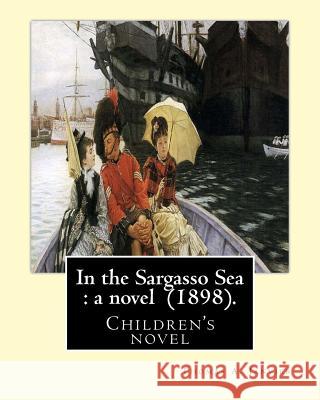In the Sargasso Sea: a novel (1898). By: Thomas A.(Allibone) Janvier: Children's novel » książka
In the Sargasso Sea: a novel (1898). By: Thomas A.(Allibone) Janvier: Children's novel
ISBN-13: 9781543064650 / Angielski / Miękka / 2017 / 108 str.
In the Sargasso Sea is a children's novel written in 1898 by Thomas Allibone Janvier. Recently, Kessinger Publishing's rare reprints has re-issued the book. The protagonist, Roger Stetworth, unwillingly joins a slave ship called the -Golden Hind- captained by Luke Chilton. (When Chilton demanded that Roger -sign aboard- he refused and was clubbed on the head and thrown overboard.) He is rescued by the -Hurst Castle- and doctored by a painfully stereotyped Irishman. The -Hurst Castle- is abandoned but does not founder in a gale and the crew, unable to get to him, are forced to leave Stetworth marooned aboard. The ship drifts into the center of the Sargasso Sea where Stetworth finds himself in a ships' graveyard in which survivors of previous shipwrecks still inhabit the forgotten ships. Stetworth must rely on his own ingenuity to get free from the choking sargasso weeds........ Thomas Allibone Janvier (July 16, 1849 - June 18, 1913) was an American story-writer and historian, born in Philadelphia of Provencal descent. Early life and marriage: Janvier received a public school education, then worked in Philadelphia for newspapers from 1870-81. In 1878 he married Catherine Ann Drinker (May 1, 1841- July 19, 1922), an artist who was the first woman teacher at the Pennsylvania Academy of the Fine Arts and first teacher to Cecilia Beaux. Later in life, she accompanied her husband on his travels while writing books and translating books from the Provencale language. Many of Janvier's published works would be dedicated -To C. A. J.- New York: Janvier went to New York in 1881. From 1884-94, he lived in the Washington Square district of New York. A few years after arriving, he published the Ivory Black Stories, tales of artist life, which were reprinted in book form in 1885 as Color Studies. In them he pictured the life and color of what was then considered the Latin quarter of the city, with the old-fashioned French restaurants, the artist colony to the north, and the studios in Tenth Street where Abbey, Millet, F. Hopkinson Smith, Laffan and others made the Tile Club famous. He published many stories and articles in Harper's Magazine. 2] Travels and death: Janvier spent several years in Colorado, New Mexico and Mexico, thereby gaining inspiration and material for much of his literary work. His travels in Mexico produced the Aztec Treasure House and his stories of Old New Spain. He and his wife also lived for three years in Avignon, Provence, France, where they became friends with Mistral and Felix Gras. Catherine A. Janvier's translations of the latter's work introduced him to English-speaking readers.His books from this period include An Embassy to Provence, Christmas Kalends of Provence and The South of France. He was made an honorary member of the Felibrige society in France, and of the Fol Lore Society of London, where he and his wife lived from 1897 to 1900, and the Century Club in New York. Janvier died in New York on June 18, 1913. He is interred in Moorestown, New Jersey. Literary family: Janvier's sister, Margaret Thomson Janvier (1844-1913), was born in New Orleans. Under the pen name Margaret Vandergrift she wrote many juveniles, among which are: The Absent-Minded Fairy, and Other Verses (1884); The Dead Doll, and Other Verses (1900); Under the Dog-Star (1900); and Umbrellas to Mend (1905). Janvier's niece, Emma P. Spicer, going by the stage name of Emma Janvier, was a well-known comedian on Broadway and elsewhere from the turn of the century until her death in the early 1920s. Janvier was also related to Philadelphia businessman and poet Francis De Haes Janvier.
Zawartość książki może nie spełniać oczekiwań – reklamacje nie obejmują treści, która mogła nie być redakcyjnie ani merytorycznie opracowana.











